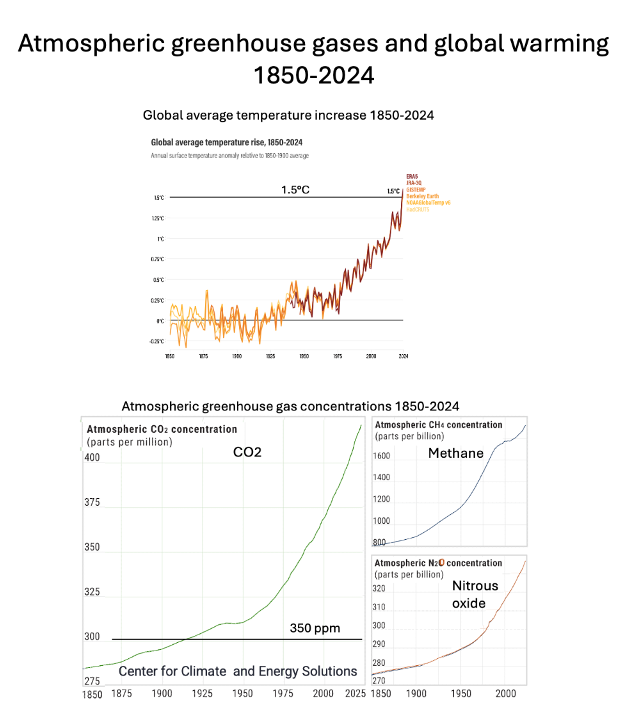DIRE PLANETARY EMERGENCY SIGNS
Site maintained by Peter Carter

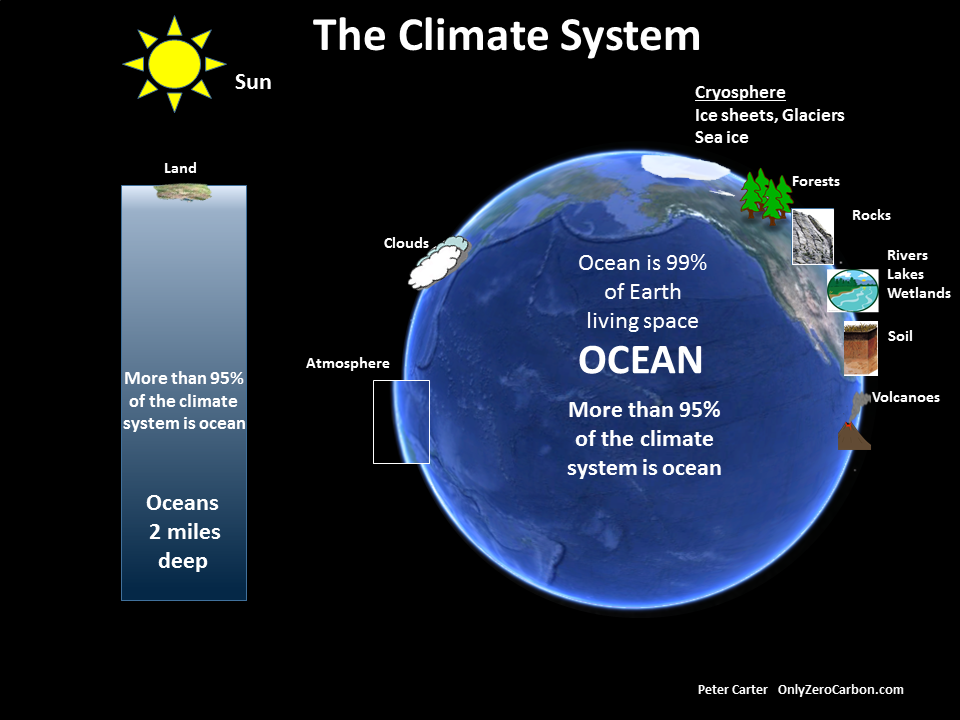
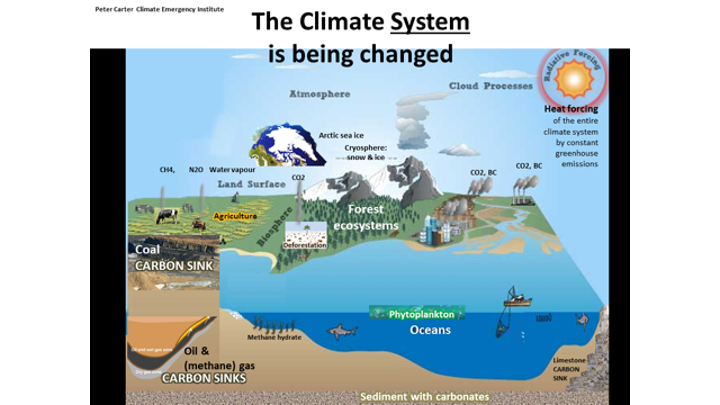
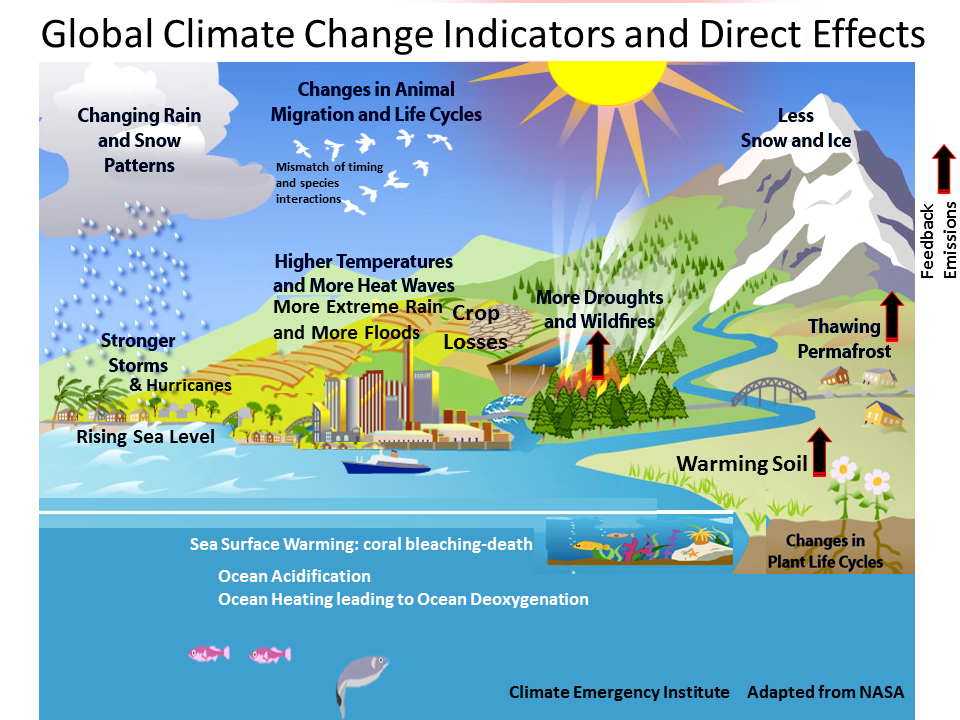
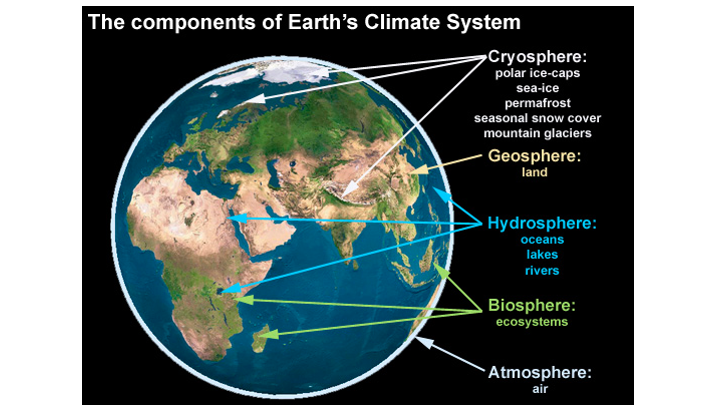
Global Warming
The 10 year trend of recent
global warming acceleration is broken,
by June 2025 dropping to 1.3°C.
Warming from 1980 is clearly accelerating
The rate of warming since 1982.
Today warming is more than three times as fast: (0.20° C) per decade as from 1900-1980. Global temperature has risen by an average of 0.06° Celsius per decade since 1850.
Northern hemisphere temperature is increasing at an accelerating rate since 2000, far faster than the global average.
May 2025 at 1.4°C broke a long run (21 months) of 1.5°.
2023 warming was a big shock record global temperature increase, followed by the record 2024 shock.
Global CO2 emissions are a new all-time high in 2024,
as are the greenhouse gas emissions (CO2 equivalent).
Atmospheric CO2 (most of heating, all ocean acidification)
is at a 14 million year high, increasing fastest in past
50 million years (IPCC AR6).
Atmospheric CO2 has increased over 50% from preindustrial.
Atmospheric methane has increased 266% (huge increase
factor 2.6) and a big increase 2019-2022.
The Oceans Oceans are far the largest and most crucial climate system component, are being heated, acidified and deoxygenated, all record high increasing at accelerating rates.
The 10 year trend of recent
global warming acceleration is broken,
by June 2025 dropping to 1.3°C.
Warming from 1980 is clearly accelerating
The rate of warming since 1982.
Today warming is more than three times as fast: (0.20° C) per decade as from 1900-1980. Global temperature has risen by an average of 0.06° Celsius per decade since 1850.
Northern hemisphere temperature is increasing at an accelerating rate since 2000, far faster than the global average.
May 2025 at 1.4°C broke a long run (21 months) of 1.5°.
2023 warming was a big shock record global temperature increase, followed by the record 2024 shock.
Global CO2 emissions are a new all-time high in 2024,
as are the greenhouse gas emissions (CO2 equivalent).
Atmospheric CO2 (most of heating, all ocean acidification)
is at a 14 million year high, increasing fastest in past
50 million years (IPCC AR6).
Atmospheric CO2 has increased over 50% from preindustrial.
Atmospheric methane has increased 266% (huge increase
factor 2.6) and a big increase 2019-2022.
The Oceans Oceans are far the largest and most crucial climate system component, are being heated, acidified and deoxygenated, all record high increasing at accelerating rates.


2023 AGU conference
Indicators record high,
increasing at record rates.
Indicators record high,
increasing at record rates.
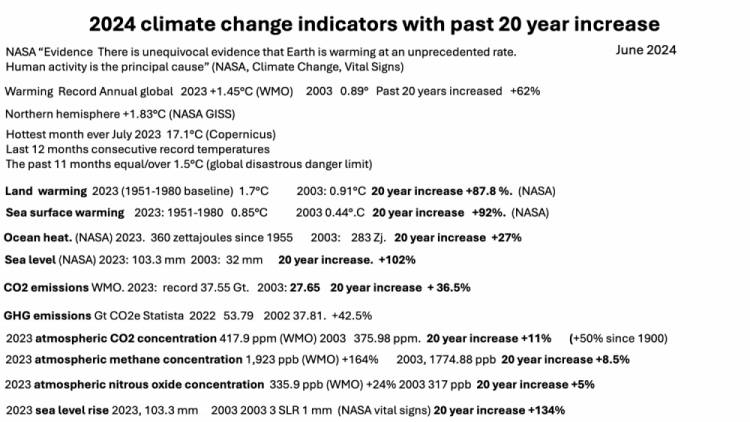
Through 2024, global warming and the three main greenhouse gases are record high and increasing at accelerating rates.
Global warming alone is a poor indicator of climate change, so other indicators are required. Ocean heat is best.
Global warming alone is a poor indicator of climate change, so other indicators are required. Ocean heat is best.

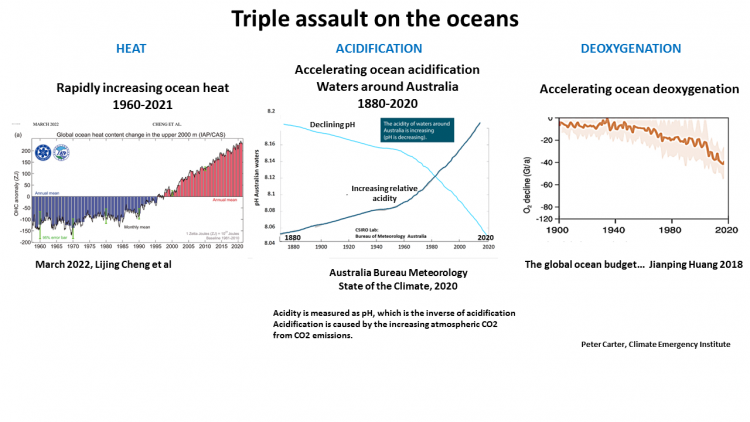
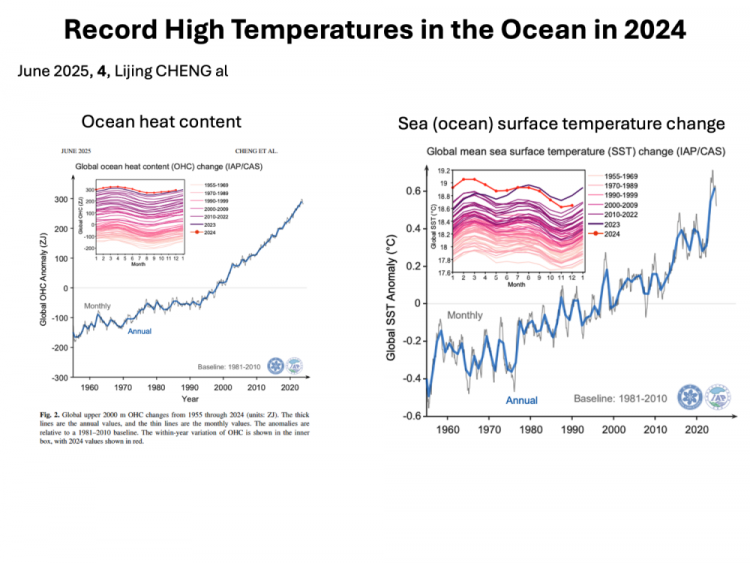
Ocean Heat As over 90% of added greenhouse gas heat goes to ocean heat, ocean heat is a better climate change indicator than global warming.
DATA Sources
